Ad Type & Inbound Vs Outbound Advertising
Lesson Overview:
In this lesson, we discuss the different strategies for inbound and outbound advertising, focusing on how to prioritize ad types based on the goals of the campaign. Understanding the distinction between inbound and outbound advertising is crucial for developing effective marketing strategies.
Key Takeaways:
- Types of Advertising:
- Inbound Advertising:
- Targets individuals actively seeking your product or service.
- Generally more profitable as it focuses on users ready to purchase.
- Examples: Google Search Ads, Bing Ads, YouTube Ads.
- Outbound Advertising:
- Targets a broader audience not actively searching for your product or service.
- More about creating awareness and brand visibility.
- Examples: Social Media Ads (Facebook, Instagram), Display Ads, Billboards.
- Inbound Advertising:
- Inbound vs. Outbound Advertising:
- Inbound Advertising:
- More effective for immediate sales.
- Users have high intent to purchase.
- Often results in higher conversion rates.
- Outbound Advertising:
- Useful for brand awareness and reaching a broader audience.
- Users may not have immediate purchase intent.
- Good for impulse buys or lead generation.
- Inbound Advertising:
- Advertising Strategies:
- For Immediate Sales:
- Prioritize inbound advertising channels where users are actively searching for solutions.
- Focus on keywords with high commercial or transactional intent.
- For Brand Awareness:
- Use outbound advertising to increase visibility.
- Focus on reaching a large audience through display ads or social media.
- For Immediate Sales:
- Choosing Ad Types:
- Search Engines:
- Function like a mall where users come with specific needs.
- Best for high-intent searches and ready-to-buy customers.
- Social Media:
- More like a party where users are browsing without specific needs.
- Best for creating brand awareness and targeting potential customers based on interests.
- Search Engines:
- Example:
- Inbound Strategy for Child Therapists:
- Use Google Search Ads targeting keywords like “child therapist near me.”
- Focus on keywords indicating high intent to purchase therapy services.
- Outbound Strategy for Brand Awareness:
- Use Facebook Ads targeting parents with young children.
- Create engaging content to capture interest and raise awareness about therapy services.
- Inbound Strategy for Child Therapists:
Action Steps:
- Identify Campaign Goals:
- Determine if the campaign’s goal is immediate sales or brand awareness.
- Select Appropriate Channels:
- For immediate sales, focus on inbound channels like search engines.
- For brand awareness, utilize outbound channels like social media.
- Conduct Keyword Research:
- Identify high-intent keywords for inbound campaigns.
- Use broad interest-based targeting for outbound campaigns.
- Create and Optimize Ads:
- Design ads tailored to the intent of the audience.
- For inbound ads, highlight immediate solutions and clear calls to action.
- For outbound ads, focus on engaging visuals and informative content.
- Monitor and Adjust Campaigns:
- Track performance metrics to assess the effectiveness of your campaigns.
- Adjust strategies based on data to maximize return on ad spend (ROAS).

